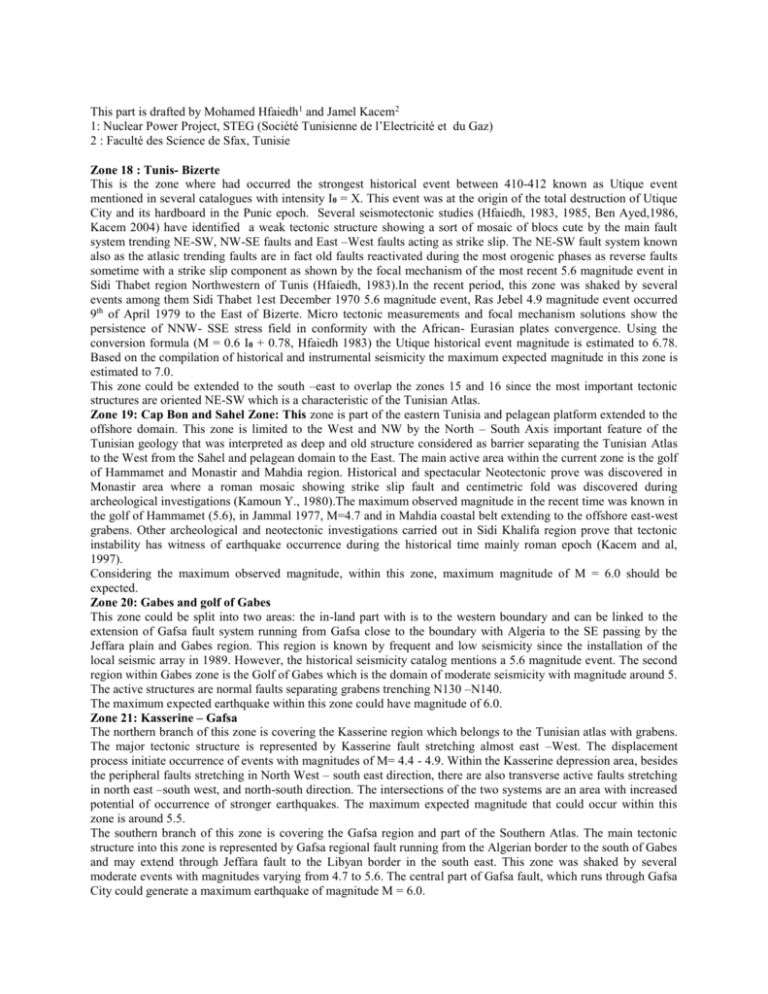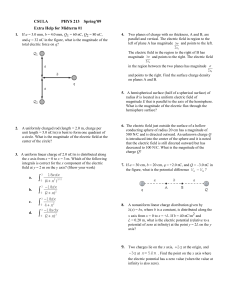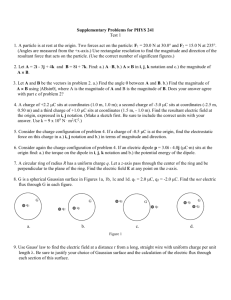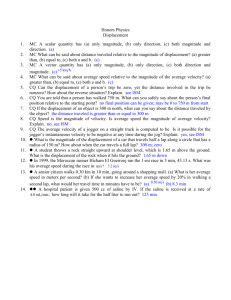Fichier d`origine
advertisement

This part is drafted by Mohamed Hfaiedh1 and Jamel Kacem2 1: Nuclear Power Project, STEG (Société Tunisienne de l’Electricité et du Gaz) 2 : Faculté des Science de Sfax, Tunisie Zone 18 : Tunis- Bizerte This is the zone where had occurred the strongest historical event between 410-412 known as Utique event mentioned in several catalogues with intensity I0 = X. This event was at the origin of the total destruction of Utique City and its hardboard in the Punic epoch. Several seismotectonic studies (Hfaiedh, 1983, 1985, Ben Ayed,1986, Kacem 2004) have identified a weak tectonic structure showing a sort of mosaic of blocs cute by the main fault system trending NE-SW, NW-SE faults and East –West faults acting as strike slip. The NE-SW fault system known also as the atlasic trending faults are in fact old faults reactivated during the most orogenic phases as reverse faults sometime with a strike slip component as shown by the focal mechanism of the most recent 5.6 magnitude event in Sidi Thabet region Northwestern of Tunis (Hfaiedh, 1983).In the recent period, this zone was shaked by several events among them Sidi Thabet 1est December 1970 5.6 magnitude event, Ras Jebel 4.9 magnitude event occurred 9th of April 1979 to the East of Bizerte. Micro tectonic measurements and focal mechanism solutions show the persistence of NNW- SSE stress field in conformity with the African- Eurasian plates convergence. Using the conversion formula (M = 0.6 I0 + 0.78, Hfaiedh 1983) the Utique historical event magnitude is estimated to 6.78. Based on the compilation of historical and instrumental seismicity the maximum expected magnitude in this zone is estimated to 7.0. This zone could be extended to the south –east to overlap the zones 15 and 16 since the most important tectonic structures are oriented NE-SW which is a characteristic of the Tunisian Atlas. Zone 19: Cap Bon and Sahel Zone: This zone is part of the eastern Tunisia and pelagean platform extended to the offshore domain. This zone is limited to the West and NW by the North – South Axis important feature of the Tunisian geology that was interpreted as deep and old structure considered as barrier separating the Tunisian Atlas to the West from the Sahel and pelagean domain to the East. The main active area within the current zone is the golf of Hammamet and Monastir and Mahdia region. Historical and spectacular Neotectonic prove was discovered in Monastir area where a roman mosaic showing strike slip fault and centimetric fold was discovered during archeological investigations (Kamoun Y., 1980).The maximum observed magnitude in the recent time was known in the golf of Hammamet (5.6), in Jammal 1977, M=4.7 and in Mahdia coastal belt extending to the offshore east-west grabens. Other archeological and neotectonic investigations carried out in Sidi Khalifa region prove that tectonic instability has witness of earthquake occurrence during the historical time mainly roman epoch (Kacem and al, 1997). Considering the maximum observed magnitude, within this zone, maximum magnitude of M = 6.0 should be expected. Zone 20: Gabes and golf of Gabes This zone could be split into two areas: the in-land part with is to the western boundary and can be linked to the extension of Gafsa fault system running from Gafsa close to the boundary with Algeria to the SE passing by the Jeffara plain and Gabes region. This region is known by frequent and low seismicity since the installation of the local seismic array in 1989. However, the historical seismicity catalog mentions a 5.6 magnitude event. The second region within Gabes zone is the Golf of Gabes which is the domain of moderate seismicity with magnitude around 5. The active structures are normal faults separating grabens trenching N130 –N140. The maximum expected earthquake within this zone could have magnitude of 6.0. Zone 21: Kasserine – Gafsa The northern branch of this zone is covering the Kasserine region which belongs to the Tunisian atlas with grabens. The major tectonic structure is represented by Kasserine fault stretching almost east –West. The displacement process initiate occurrence of events with magnitudes of M= 4.4 - 4.9. Within the Kasserine depression area, besides the peripheral faults stretching in North West – south east direction, there are also transverse active faults stretching in north east –south west, and north-south direction. The intersections of the two systems are an area with increased potential of occurrence of stronger earthquakes. The maximum expected magnitude that could occur within this zone is around 5.5. The southern branch of this zone is covering the Gafsa region and part of the Southern Atlas. The main tectonic structure into this zone is represented by Gafsa regional fault running from the Algerian border to the south of Gabes and may extend through Jeffara fault to the Libyan border in the south east. This zone was shaked by several moderate events with magnitudes varying from 4.7 to 5.6. The central part of Gafsa fault, which runs through Gafsa City could generate a maximum earthquake of magnitude M = 6.0. References: Ben Ayed Noureddine, (1986) : Evolution tectonique de l’avant-pays de la chaine alpine de Tunisie du début du Mésozoïque à l’actuel. Ann. Mines et Géol., No. 32, 286p Hfaiedh M. (1983) : Etude sismotectonique de la Tunisie Nord Orientale. Thèse 3ème cycle, Université Paris –Sud Orsay. Hfaiedh, M., Ben Ayed, N., and Dorel, J., (1985a), Etude néotectonique et séismo-tectonique de la Tunisie NordOrientale: Note Serv. Géol. Tunisie, v. 51. Hfaiedh, M., and Chadi, M., (1985): Seismicity of Tunisia and neighbouring area. European Geotraverse. European Foundation: Strasbourg, p. 261-267. Kacem J., Hfaiedh m. et Dlala M. (1997) : Etude de la sismicité de sidi Khalifa et ses environs. Congrès de la Société géol. France « les marges Téthysiennes d’Afrique du Nord » 16 – 17 Décembre, p.31. Kacem J. (2004) : Etude sismotectonique et évaluation de l’aléa sismique régional du Nord-est da la Tunisie Apport de la géophysique dans l’identification des sources sismogéniques: Tunis, Univ. Tunis El Manar. Kamoun Y., Sorel D., Viguier C. et Ben Ayed N. (1980): Post-Tyrrhenian strike-slip faulting in Eastern Tunisia-the N160 sinistral faults of Skanes (Monastir) and Hammamet, C.R.Acad.Sci., 290 (10), 647-649.







